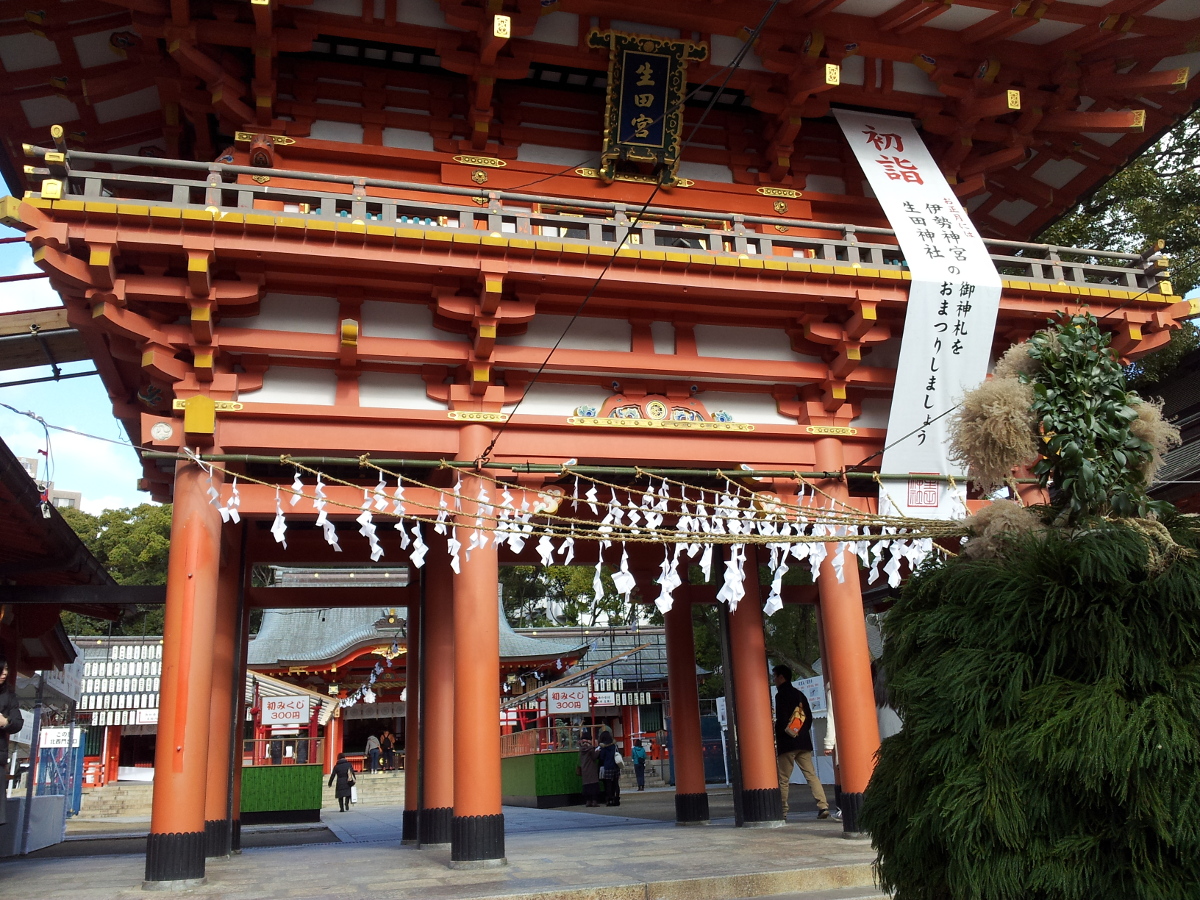Kitano-Chou, Part 2
※ This article discusses the 30th of December 2016.
The previous trip to Kitano-Chou was nice, but I didn’t get an overview of the houses and certainly there is more to discover. So I had to return. Martina was not motivated, so 2 days later, I was on my own. I started with Kitano-Chou, where I left of last time.
Starting from Sannomiya, I headed to Ikuta Shrine. It was quite a time ago since my last visit and I wanted to see preparations for tomorrow. On New Year’s Eve, a lot of people are expected at Ikuta Shrine. In conclusion, they were busy building up some structures and booths. Plenty of boards got attached to the shrine though I don’t know what they kanji say (I assume they are prayers). A tree was in front of the shrine and ropes connect the Torii with the tree. On these papers, handwritten wishes can be found.

In front of the Kobe Baptist Church (on the border of Yamamotodori and Kitano-Chou), a cat was sitting on the sidewalk in the sun. I could enjoy petting her for a while. Then I reached the houses.
Irish House
A little bit unexpected, but the main theme of the Irish House was hunting. Stuffed bears, elks and deers were shown together with hunting equipment. They also collected donations for Luminarie.
French House
The main theme of the French House is dining. The layout of the table, wine and cheese was presented with Amélie as background music.
Denmark House
The Denmark House did not have a main theme in my opinion. It rather shows a simple style of living. A piano, a chess board and simple cooking equipment were on display. Of course some clothing is always part of the exhibition.
Netherlands House
The Netherlands House issued the Vikings. Clogs were shown in front of the House, but inside it was all about the life of Vikings (clothing, household items, food, house architecture, etc.).
Former Chinese Consulate
Next, I visited the Former Chinese Consulate. I displayed decorated stone turtles next to the entrance, a Chinese dining table and a bathroom. The bathroom featured a bath tub not connected to a drain, a basin and a wooden construction to cover your body when undressing. It was interesting to recognize that many items were either made of marble or Porcelain. Vases and images of emperors are also recurring items. A larger vase with a dragon on it can be found in the garden. I like Chinese painting patterns (e.g. tradition style of painting the animals of the Chinese calendar).
Kitanotenman Shrine
Kitanotenman Shrine has quite a few of steep steps in front. If you finish them, you reach a platform with a nice view on Kobe (though some trees block the view) and on the next level, the Shrine is placed. I wondered how much space Japanese Shinto Shrines take up in the country. In Austria, it is famously known that the Christian church owns the largest portion of area compared to other single organizations or companies. But I failed to find data for Japanese Shinto Shrines.
The number of Shinto shrines in Japan is estimated to be around 100,000. This figure may, or may not, include private shrines in homes and owned by small groups, abandoned or derelict shrines, roadside Hokora. etc.
I came to conclusion, that Shinto Shrines require less space than churches, but there are more Shrines in one Japanese city than churches in a European city. I still think that the Shrines' area does not outnumber the area of their European equivalent.
Weathercock House
The next destination was the Weathercock House. The brick layout on the facade is very distinguishing. Does it belong to a country? No, the Weathercock House is just some distinct architecture some English trader living in Kobe came up with. Inside the main theme is the weathercock and some English items were on display. Nothing particularly interesting, but the souvenirs in the shop inside were more fancy than on other locations (cookies, chopsticks, etc. with the weathercock drawn onto it). It was the only house where the room design and staircases provided as much space as I am used to from European houses. The ceiling was higher and two people could go upstairs/downstairs simultaneously without touching each other.

Finally I went to the Moegi House. Outside it looked very nice, but taking a peek inside through the window, it seemed boring inside. I did not care to go in.
In conclusion, I traversed Kitano-Chou from east to west (just to clarify: but the houses are not in a line). The houses are not very interesting for Europeans, but I guess I got a clearer picture how Japanese people image European style. 500 Yen per house would be way too much to me, but for free it was a decent experience. By the way, some streets are very steep. Take care, if you go there with elderly people. In the following, I wanted to find an entrance to a path leading to the Venus bridge.